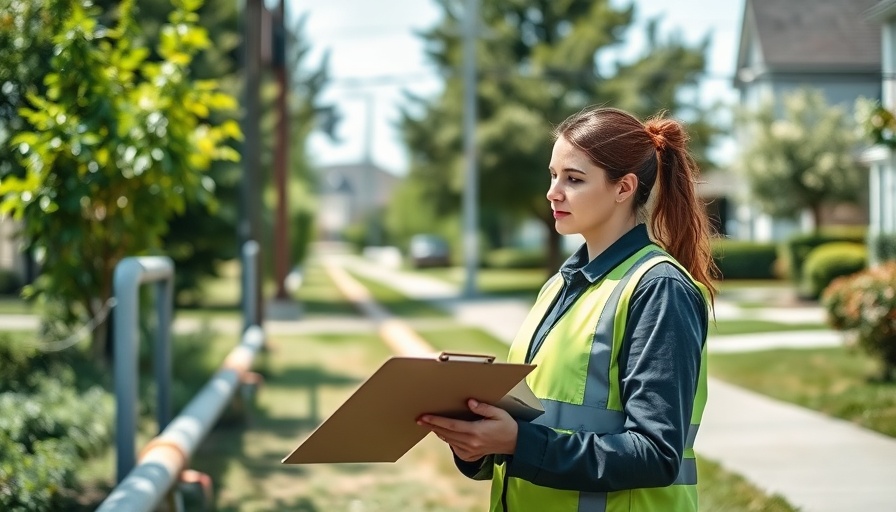
Cutting Costs and Boosting Safety: A Homeowner's Guide to Lower Insurance Rates
In recent years, homeowners across the nation have faced climbing insurance rates due to a variety of factors such as natural disasters, severe weather patterns, and rising home values. While it may seem daunting, there are proactive steps homeowners can take to potentially save on their insurance premiums. A combination of regular home maintenance and targeted upgrades can work wonders for both the safety of your dwelling and your wallet.
Why Maintenance Matters
When it comes to keeping insurance rates manageable, one of the most significant influences is the condition of your home. Failure to maintain your property can lead to costly damage, resulting in claims that drive rates up. Additionally, insurance companies may raise your premiums or even deny coverage if they perceive your home to be poorly maintained. Engaging in regular upkeep is vital. According to experts like Scott Holeman from the Insurance Information Institute, simple improvements can make a remarkable difference in insurance costs.
Smart Home Projects That Save
To maintain both safety and affordability, consider the following projects that can effectively lower your home insurance premiums:
1. Invest in a Security System
Installing a monitored security system could lead to savings of about five percent or more on insurance premiums. Some insurers may offer discounts as high as 20 percent for smart installations that include alarms directly linked to local authorities. Even a simple deadbolt lock can lead to notable savings. While upfront costs can be significant—ranging from $1,500 to $2,500—the long-term benefits often outweigh this investment.
2. Upgrade Electrical Wiring
Outdated electrical systems pose a fire risk that can lead you to pay higher insurance premiums. Homeowners should consider upgrading their wiring to more modern, safer setups. This not only mitigates risks but can also present opportunities for discounts from insurers. Costs for rewiring can vary significantly, ranging from $4 to $12 per square foot, while electrical panel upgrades can fall between $2,000 and $10,000.
3. Modernize Plumbing Systems
Similar to electrical risks, aging plumbing can contribute to extensive water damage, a common source of claims. Updating your plumbing components, such as old water heaters and leaky fixtures, can reduce the likelihood of such occurrences. A new hot water tank typically costs around $2,000, while costs for repiping depend upon the home's specific needs.
4. Refresh Your HVAC Systems
Having a modern HVAC system is critical for insurance savings as outdated systems can break down frequently, leading to potential damage and claims. Insurers prefer HVAC age to be no greater than ten years. Whether switching from oil to natural gas or electric, regular updates can indeed lead to premium discounts. Expect to invest around $6,000 to $13,000 for necessary updates.
5. Prioritize Roof Maintenance
A worn-out roof can not only spur on insurance claims but also risk the loss of coverage altogether. To prevent issues, regular inspections and maintenance can improve your roof's lifespan and your relationship with your insurer.
The Benefits of DIY Projects
Many of these upgrades can be approached with a DIY mindset. Taking on projects yourself can not only save money but also contribute to a sense of accomplishment. Here are some DIY home project ideas aimed at enhancing your insurance savings:
- DIY Home Improvement: Create a checklist of improvements, tackling them one project at a time to enhance the safety and value of your home.
- DIY Home Maintenance: Remember to perform seasonal checks on heating and cooling systems to ensure efficiency and reduce the risk of breakdowns.
- DIY Home Security: Simple technologies like smart doorbells and home monitoring systems can often be installed by homeowners at a lower cost than hiring professionals.
Conclusion: Proactive Steps Lead to Savings
Ultimately, the key to lower home insurance rates lies in proactive maintenance and thoughtful upgrades. By taking charge of your home’s upkeep, you can not only achieve peace of mind but potentially save substantial amounts on your insurance premiums. Consider adopting a few of these projects today, and you might find that investing time and effort into your home translates into great financial benefits in the long run.
 Add Row
Add Row  Add
Add 




Write A Comment